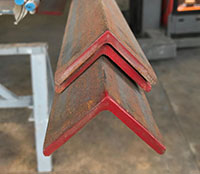Don't see what you're looking for?
Contact our friendly sales team for expert assistance in locating the right product for your needs.
Carbon Steel is a steel with carbon content up to 2.1% by weight. The definition of carbon steel from the American Iron & Steel Institute (AISI) states:
Steel is considered to be carbon steel when:
No minimum content is specified or required for chromium, cobalt, molybdenum, nickel, niobium, titanium, tungsten, vanadium or zirconium, or any other element to be added to obtain a desired alloying effect;
The specified minimum for copper does not exceed 0.40 percent;
Or the maximum content specified for any of the following elements does not exceed the percentages noted: manganese 1.65, silicon 0.60, copper 0.60.
The term "carbon steel" may also be used in reference to steel which is not stainless steel; in this use carbon steel may include alloy steels.
As the carbon percentage content rises, steel has the ability to become harder and stronger through heat treating; however, it becomes less ductile. Regardless of the heat treatment, a higher carbon content reduces weldability. In carbon steels, the higher carbon content lowers the melting point.



